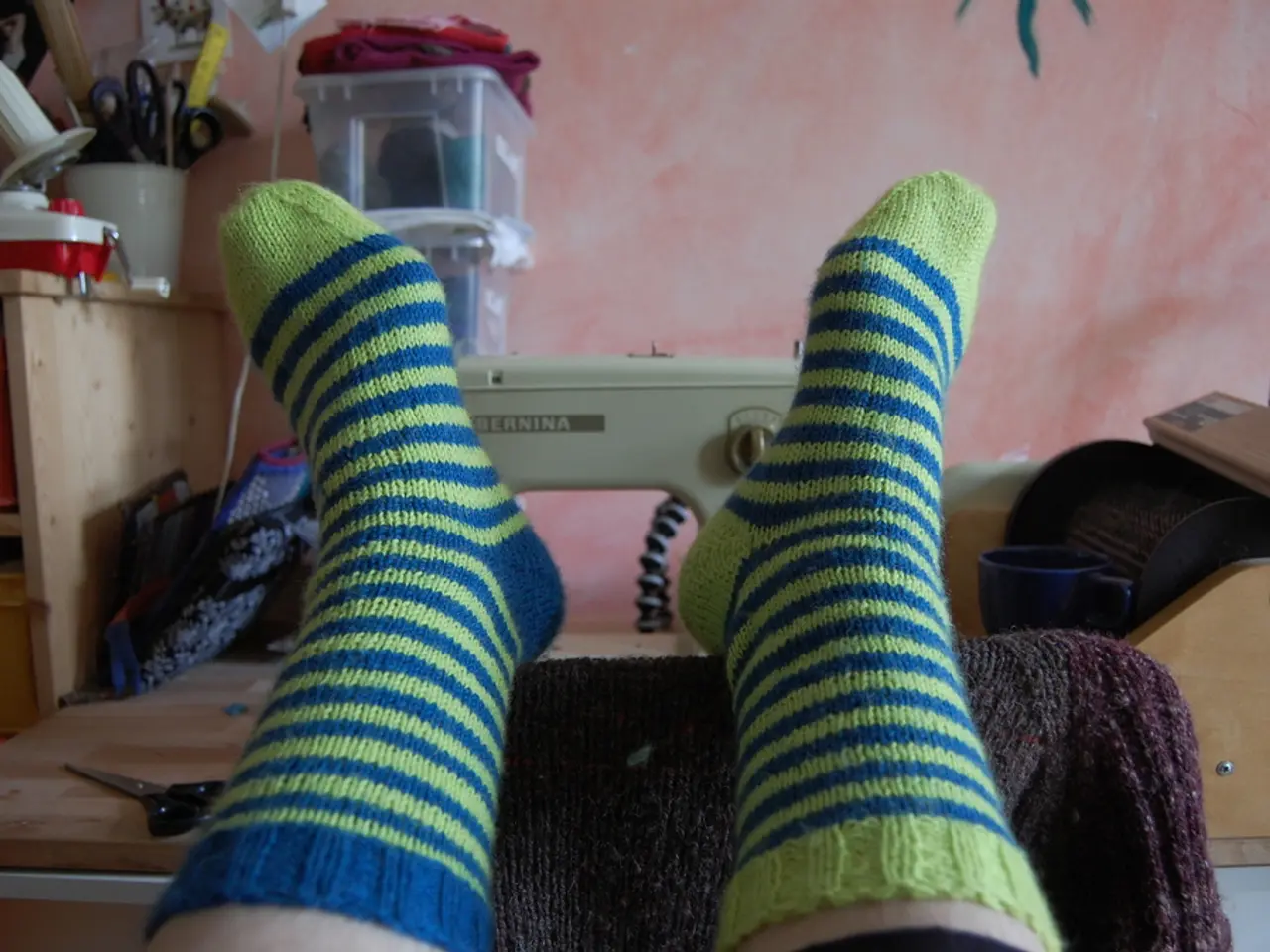Images Showcasing British Women's Fashion Resilience Amid World War II Limitations (35 Snapshots)
In the midst of World War II, fashion took a practical turn in Britain. With rationing and resource conservation at the forefront, Utility Clothing became a staple, transforming everyday garments into stylish statements.
One of the pioneers of this movement was fashion designer Hardy Amies, who created a brown and beige all-wool checked suit during the war. The suit, while practical, retained a sense of elegance that was much needed in those challenging times.
The Utility Clothing Scheme, introduced during the war, labelled garments as "CC41" to indicate they were simple, practical, and resource-efficient. This initiative was reflected in various fashion pieces, such as a model's black woolen Utility Atrima dress in 1943, or a scarlet and white spot-printed Utility Rayon shirt dress, also costing 7 clothing coupons.
The fashion industry adapted to the times, with designers like Norman Hartnell, known for creating designs for Utility clothing, adjusting their workrooms to each client's measurements. Even the stands used in workrooms were altered to accommodate the new standards.
In the heart of London, on a Bloomsbury rooftop, two models wore wartime fashions, showcasing the versatility and style of Utility clothing. The same rooftop also saw a model in a two-tone Atrima dress, costing 7 coupons, and another in a pale blue and black wool Atrima dress, which cost 11 clothing coupons.
Women in the workforce or military service wore practical uniforms that became a new fashion statement. Even everyday attire, like hats, underwent a transformation. Rabbit fur was processed at a hat manufacturer during the war, and craftsmen pounded hats to remove the rough nap from the fabric, ensuring a comfortable and stylish accessory for the women of Britain.
In the West End of London, four young ladies enjoyed a stroll, their outfits a testament to the enduring spirit of fashion in the face of adversity. A bride might even wear a dress made from parachute silk during the war, demonstrating the ingenuity and resourcefulness of the times.
Designers like Elspeth Champcommunal, who created a design for Worth London under wartime restrictions, and Bianca Mosca, who designed a wedding dress for actress Peggy Bryan during the war, continued to create beautiful and innovative designs, despite the challenges.
In the midst of rationing and resource scarcity, the fashion industry in Britain managed to maintain a sense of style and elegance, turning practicality into a fashion statement. The Utility Clothing Scheme, while a necessity, became a symbol of resilience and innovation, shaping the fashion landscape of World War II Britain.
Read also:
- Dinesh Master's Expedition: Acquiring Mango Orchard through Our Online Platform
- Solar panels decreasing expenses and aiding ecological preservation
- Expanded Plant-Based Protein Industry Forecasted to Reach a Value of $30.8 Billion by 2034, Growing at a Compound Annual Growth Rate (CAGR) of 7.1%
- Key Stats Presented in 29 Infographics






